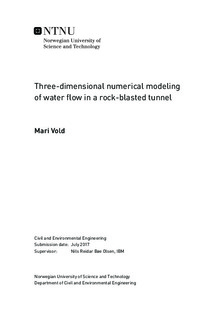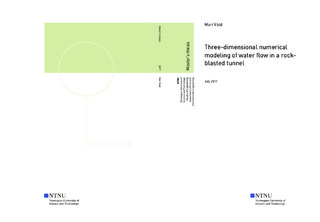Three-dimensional numerical modeling of water flow in a rock-blasted tunnel
| dc.contributor.advisor | Olsen, Nils Reidar Bøe | |
| dc.contributor.author | Vold, Mari | |
| dc.date.accessioned | 2017-10-11T14:01:55Z | |
| dc.date.available | 2017-10-11T14:01:55Z | |
| dc.date.created | 2017-07-17 | |
| dc.date.issued | 2017 | |
| dc.identifier | ntnudaim:17099 | |
| dc.identifier.uri | http://hdl.handle.net/11250/2459765 | |
| dc.description.abstract | Climate change leads to more intense precipitation in Norway. NVE requires all bypass tunnels have sufficient capacity for bypassing flood water. The hydro-power industry needs a method for establishing tunnel capacity, such as computing a friction factor. Friction factor for rock-blasted tunnels have yet to be studied thoroughly. This thesis describes a method for finding friction factors for Litjfosstunnellen using numerical models. Three turbulence models are tested and compared; k-Epsilon, k-Omega and k-Omega SST. For otherwise identical setups k-Epsilon converges better than the other two. k-Epsilon yields larger Darcy friction factors than k-Omega and k-Omega SST in general. Grids with more cells yield larger friction factors than a coarse mesh (with one exception). Grid independence is not reached. | |
| dc.language | eng | |
| dc.publisher | NTNU | |
| dc.subject | Bygg- og miljøteknikk, Vassdragsteknikk | |
| dc.title | Three-dimensional numerical modeling of water flow in a rock-blasted tunnel | |
| dc.type | Master thesis |

